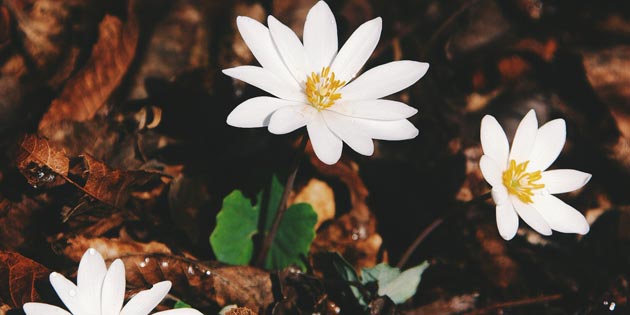“It all started with the sugar maple,” Jean Everett, senior instructor of biology and botany expert said.
Everett had pulled her truck over on Aviation Avenue one fall day about 15 years ago. She jumped out to photograph a patch of Elliott’s aster, an uncommon flowering plant native to the Southeast, on land that would later belong to the Boeing Co. She was shocked to see a sugar maple tree on the edge of the woods, as sugar maples require a rare soil type almost never found in coastal regions.
“I knew it was a sugar maple right away,” Everett said, “but it was fall and this species is found in ecosystems that blossom in the spring, so I hoped to come back in the spring to see it in bloom. Then every time I tried to get back in the spring to see it, police or landowners would tell me I couldn’t be on the property.”
Years later, as Boeing prepared to begin construction on the site of what is now their 787 Dreamliner final assembly facility, Everett made a last-ditch effort to see, and possibly relocate, the native plants there.
“Boeing has been so gracious,” Everett said. “They’ve been such an amazing community partner, they’ve gone above and beyond in conservation efforts.”
RELATED: Learn more about the Boeing Co.
While many of Boeing’s efforts take place outside of their land, in places like Francis Marion National Forest, the company allowed Everett and her plant taxonomy class come to the site to observe the many native plant species thriving there.
Shortly after, a Boeing representative reached out to Everett again to offer a window in which she could remove the native plants from the site expansion area.
“Boeing is committed to environmental citizenship and partnering in our communities,” said Larry Colshan, Site Services Group director, Boeing South Carolina. “This was a perfect combination of both. We were open to the idea of Dr. Everett and her College of Charleston team collecting and preserving the native South Carolina plants from our expansion site because of the opportunity it would provide for future generations to enjoy these native plant species. We continually look for ways to work with our community partners to protect the unique natural ecosystem of our region, and we’re very proud of the impact we’re having on protecting, preserving and improving the environment for our Boeing teammates, their families, and our neighbors here in the Lowcountry.”
“The week they were clearing the site they sent me an email saying I could bring a crew of about 10 people to remove the plants. They emailed on a Wednesday, we arrived on Thursday and site clearing began Friday,” Everett said.
The preservation mission gave Everett an opportunity to work with her students and other campus and Charleston community parties, applying her expertise outside the classroom and relocating thousands of rare native plants from the construction.
“The deal with Boeing was that we would try to put as many of the plants as possible in public parks and gardens, including those at the College. The South Carolina Aquarium along with several local parks and the South Carolina Native Plant Society (SCNPS) were very helpful in rescuing and placing the plants as well.”
After the first preservation effort in 2009, the replaced plants flourished in their new habitats. And then Boeing reached out again. With each new site expansion project the company announced in North Charleston they allowed Everett and a crew of volunteers to remove hundreds or thousands of plants from their land, most recently in March, 2014.
Everett is still awed by Boeing’s generosity with their land and excited to share a dedication to native plant preservation with such an influential company.

Trillium maculatum, or ground lily, found at the Boeing site
“Native plants are what maintain the integrity and structure of an ecosystem,” Everett explains. “The presence of native plants in a habitat is necessary for native insect abundance and diversity and native songbird abundance and diversity. All the ecosystem functions – which are very valuable in terms of getting us clean water, clean air and supporting native animals – depend on having native plants in the landscape.”
Everett, who teaches several sections of biology for majors and plant taxonomy courses each year, says one of her dream courses would be botany for gardeners. “Many gardeners try to plant natives that fail because they just don’t know enough about the soil they’re working with. With many of our most decorative natives, it’s absolutely essential to put the right plant in the right place.”
While her busy schedule currently prohibits Everett from taking on a new class, working with College of Charleston and many other volunteers to delicately remove and replace Boeing’s natives allows her a treasured hands-on teaching opportunity. And, like the Boeing plants Everett has helped to preserve, she’s finding that opportunities to rescue and care for native plants in the Lowcountry continue to grow.






